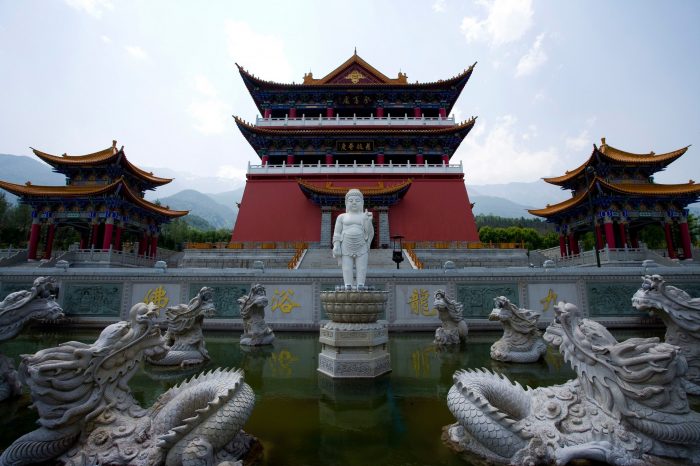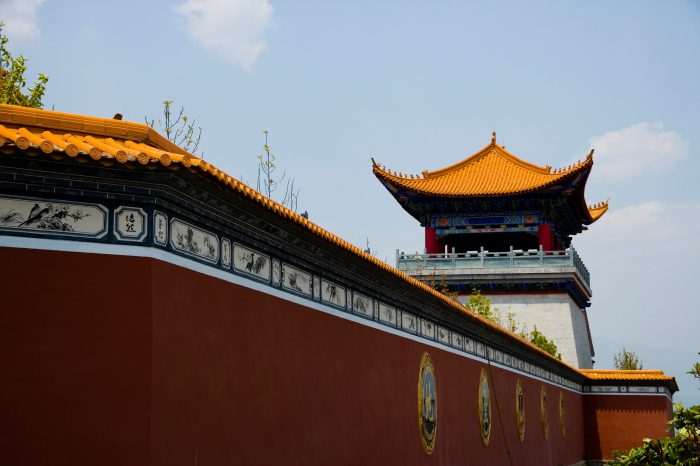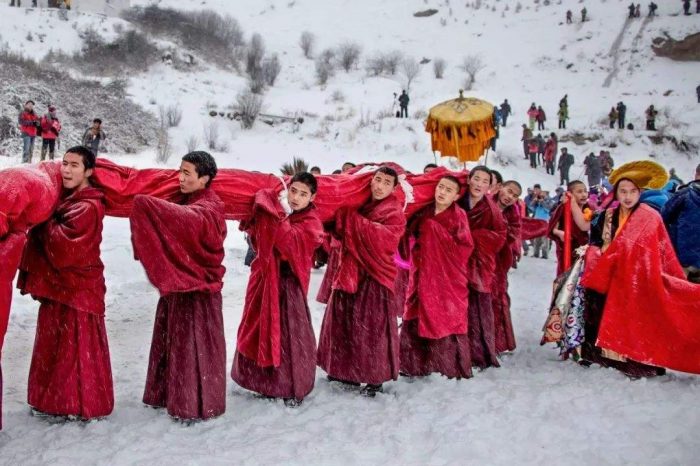More Information
[email protected]
+86 28 8503 0959
Mon - Fri 9.00 - 18.00
Overland Laos – China – Kazakhstan driving road trip
Keywords: drive to china, driving into china
Day 01 Laos/Mohan-Mengla 48km, 860m
Enter China, and deal with the related procedures at border. Guide will meet you at China side and help you all after come into China. Drive about 1 hour to next town-Mengla.
Day 02 Mengla-Jinghong 166km, 552m
Finish the rest procedures at Mengla and then drive to Jinghong, the capital of Xishuangbanna Prefecture. If time permits, option for visiting: Menglun Tropical Botanic Garden around 90km away; and It’s good a place for learning tropic forest and a light trekking inside.
Drive back and stay overnight in JInghong.
Day 03 Jinghong 552m
Drive your own car visiting around Jinghong today. Options:
Ganlanba Dai village (Menghan): drive around 27km. A grand destination-the lovely, friendly, somnolent village itself- is as a quasi minority theme park. The shadow between shining leaves of coco, exotic bamboo house, and local minorities people will make you relax and joyful.
Banna Wild Elephant Valley (Yexianggu valley): drive around 48 km. 40 or so wild elephants that live here.
Day 04 Jinghong-Puer-Jinggu 264km, 820m
Drive from Jinghong to Jinggu via Pu’er. Enjoy along the road.
Day 05 Jinggu-Lincang-Yunxian 245km, 1107m
Drive from Jinggu to Yunxian via Lincang. Enjoy along the road.
Day 06 Yunxian-Dali 227km, 1976m
Drive to Dali from Yunxian. After arrival in Dali, visit and relax here. The ancient town lies between the mountains and the Erhai Lake. It’s a small town with a few well-preserved old streets and traditional stone houses which are surrounded by the wall. The layout of the town and its surroundings will be impressive for you.
Day 07 Dali 1976m
Around Er’hai: Erhai has the area of 249 square kilometers and surrounding by group of mountains. Enjoy the scenic viewing. You can boat tour on Er’hai or cycling along the lake bank and through some local Bai villages etc. Caicun,a pleasant little village east of Dali, is the nexus of lake transport. You may ask the boat here. And Close to Wase are Putuo Dao (Putuo Island) and Lesser Putuo Temple (Xiaoputuo Si), set on an extremely photogenic rocky outcrop.
The Three Pagodas: it’s the symbol of the town. about 2km north of the north gate of Dali ancient town;
Day 08 Dali-Shaxi-Jianchuan-Lijiang 225km, 2416m
Drive to Lijiang via Shaxi and Jianchuan county. Shaxi once a crucil node on one of the old tea-horse roads (more like “caravan routes“) that stretched from Yunnan to Tibet,Nepal, Burma, Laos, Vietnam and parts of China. The “Friday market“ is the only one with a surviving marekt now. Then go on drive to get to Lijiang via Jianchuan. Lijiang one of the most beautiful towns and also belongs to the World heritage list of UNESCO. Its maze of cobbled street, rickety wooden buildings and gushing canals make suitable atmosphere. You can enjoy and relax here.
Day 09 Lijiang 2416m
Sightseeing in Lijiang on today:
Black Dragon Pool Park: On the northern edge of Lijiang is the Black Dragon Pool Park. Its view of Yulong Xueshan (Jade Dragon Snow Mountain of 5,596 m) is the most obligatory photo shoot in south-western China.
The Museum of Naxi Dongba Culture: Naxi cultural is with the unique pictograph script for religion purpose before (dance and music ritual), and normally speaking it started from Tang and Song dynasty so have history of over 1000 years already.
Day 10 Lijiang-Baisha-Tiger Leaping Gorge-Shangrila 220km, 3280m
Head to Baisha village and visiting, famous for the Baisha Fresco which was made in the Ming Dynasty (1368-1644), compare with other religion mural, the features of such mural here are rich and varied. And then go on drive to Shangri-la and on road trekking in Tiger Leaping Gorge. Drive to parts of China’s longest river, the Yangtze (6380 km), and the part we trek is along with the first period of the river called Jinsha River (Jinsha Jiang). As one of the deepest gorges in the world, Tiger Leaping Gorge measures 16km long. Hike in the gorge for several hours, then we go on drive to Shangri-la (3200 m) in the afternoon. Now we are already near the Tibet edge.
Day 11 Shangrila-Lijiang 173km, 2416m
Visit Songzanlin Monastery in the morning. One of the main attractions of Shangri-La is the famous Songzanlin monastery (Ganden Sumtseling Gompa) which built by the fifth Dalai Lama in 1679. Its appearance is strongly influenced by the Potala Palace in Lhasa, so it also has a nickname of “Little Potala”. After visiting drive back to Lijiang.
Day 12 Lijiang-Luguhu See 204km, 2690m
Drive to Lugu Lake today. It is forest-lined lake that overlaps the remote Yunnan-Sichuan border. And it’s a plateau lake with a total area of 52 square kilometers with five islands in the lake; 3 are in the territory of Yunnan and 2 in that of Sichuan. The area is home to several Tibetan, Yi and Mosu villages. The Moso have their own ways and customs; still retain some remnants of the matriarchal society as the last one in the world.
Day 13 Luguhu See- Yanyuan-Xichang 282km, 1500m
In the morning you observe quiet lake with Luguhu sunrise. Then drive to Xichang via Yanyuan county.
Day 14 Xichang-Meigu 169km, 2082m
Drive to Meigu.
Day 15 Meigu-Emeishan 220km, 551m
Drive to Emeishan and get to the foot of the Mt. you can enjoy the hot spring after arrival. This mountain is one of the most famous four Buddhist Mountains of the Middle Kingdom. Here you will enjoy the beautiful mountain scenery, tea plantations, some old temples, monkeys, etc.
Day 16 Emeishan 3099m-551m
Visit on Emeishan Mt. today. The normally schedule will be: by the sightseeing bus to Leidongping in the early morning. Here you can decide if you take a cable car or take a hike up to the Golden Summit of Mt. Emeishan. If by walk will take about 2 to 3 hours; If by cable car will just take several minutes. After visiting, back to the foot of the Mt. in the afternoon by sightseeing bus again.
Day 17 Emeishan-Leshan-Chengdu 155km, 500m
In the morning drive to Leshan for visiting, Leshan Giant Buddha is the world largest sitting Buddha statue in Leshan which was built in Tang dynasty. And with Emeishan, they are on the list of the World Heritage. After visiting go on drive to Chengdu. Enjoy welcome dinner and watch the famous local opera: Sichuan Opera with “face changing”.
Day 18 Chengdu-Dujiangyan 64km, 700m
Visit the Panda breeding center in Chengdu in the morning. Then drive to Dujiangyan irrigation project for visiting. It was built 220 BC, and work till today with annual maintaining, even after the heavily earthquake in 2008.
Day 19 Dujiangyan-Wenchuan-Hongyuan(Osttibet-Kham) 362km, 3507m
Drive to Wenchuan. Along the way you see the ruins of large earthquake on May 12, 2008. And go on drive to Hongyuan grassland. This route is the normally one to Gansu Province. Even if you didn’t plan going further to north of Sichuan, this area offers the opportunity to learn about remote Tibetan villages and county.
Day 20 Hongyuan-Zöige-Langmusi(Osttibet-kham) 218km, 3400m
Drive to Langmusi via Zögie. A dusty concrete town set amid the grasslands, Zoige doesn’t have much pull for travelers except as a stopover en route to Langmusi and Gansu province. While the town’s Chinese name is Ruo’ergai, it’s most commonly known by its Tibetan name Zögie. At the northeastern edge of town is Ta Tsa Gmpa (Dazha si), a Tibetan temple with pleasant, peaceful grounds. Then go on drive to Langmusi. Visit the monastery Langmusi on both sides of the border between Sichuan and Gansu.
Day 21 Langmusi-Luqu-Xiahe(Osttibet-Amdo) 184km, 3200m
Drive to Xiahe via Luqu. Visit the Labrang Monastery. This monastery was founded in 1709. At its peak the monastery housed nearly 4,000 monks. In addition to the chapels, residences and living quarters for the monks, Labrang is also home to six tratsang (monastic colleges or institutes), covering esoteric Buddhism, theology, medicine astrology and law.
Day 22 Xiahe-Tongren(Repkong)(Osttibet-Amdo) 122km, 2600m
Drive to Tongren(Repkong in Tibetan). Tongre is an amiable (but growing) monastery town of Tibetan monks and Hui shop owners, both of whom cater to thevalley’s many monasteries. For several centuries now, the villages outside town have been famous for producing some of the Tibetan world’s best thangkas (Tibetan sacred art) and painted statues, so much so that an entire school of Tibetan art is named after the town. Like Wutun monastery, here you have chance to meet the artists, and also have chance to purchase a painting or two, fresh off the easel. There are several options visit: Gomar Gompa, Rongwo Gonchen Gompa etc.
Day 23 Tongren-Jianzha-Huangzhong-Xining(Osttibet-Amdo) 176km, 2295m
Drive to Xining via Jianzha and Huangzhong. In Jianzha there is an opportunity boating on the lake called Lijiangxia of the Yellow River. You can also visit the Kanbula National Forest Park with the landscape of red, and the famous ancient monasteries in Sanstein Namdzog besichitigen valley. Then go on drive to Huanzhong, visit the Kumbum (Ta’er Monastery). The Kumbum Monastery is one of the great monasteries of Gelugpa (Yellow Hat) sect of Tibetan Buddhist, and it was built in 1577 of Ming Dynasty on hallowed ground- the birthplace of Tsongkhapa, founder of the Gelugpa sect. After visiting go on drive to Xining.
Day 24 Xining-Chaka-Dulan 424km, 3104m
Drive to Dulan via Chaka. Visit Chaka Salt Lake here when pass by. The Chaka Salt Lake covers an area of 105 square kilometers and is a typical chloride salt lake. Here you can watch the process of promoting salt, and watch the various salt crystals in the form of pearls, corals, snowflakes, and mushrooms.
After visiting continue drive to Dulan.
Day 25 Dulan-Golmud 347km, 2800m
Drive to Golmud. It’s a shame that Golumd finds itself in the oblivion end of China, as this rather pleasant midsized town of tree-lined streets, Sichuan and Muslim restaurants, fresh air and great natural lighting (the altitude does it) is a great place to make a stopover.
Day 26 Golmud-Dunhuang 527km, 1139m
Drive to Dunhuang. The fertile Dunhuang oasis has long been a welcome sight for weary Silk Road travelers.
Day 27 Dunhuang 1139m
On today relax and visiting in Dunhuang. Options:
Mogao Caves: The Mogao Caves are, simply put, one of the greatest repositories of Buddhist art in the world. At its peak, the site housed 18 monasteries, over 1,400 monks and nuns, and countless artists, translators and calligraphers.
Mingsha Shan (Singing Sand Mountain): From here it’s easy to see how Dunhuang gained its moniker Shazhou (Town of Sand). At the base of colossal mega dunes, the highest peak of which stands at 1715m, lies a miraculous pond, known as Crescent Moon Lake. The climb to the top of the dunes is sweaty work, but the view across the undulating desert sands and green poplar trees below makes it a spectacular sight.
Day 28 Dunhuang-Hami 411km, 800m
Drive to Hami.
Day 29 Hami-Turpan 404km, 32m
Drive to Turpan. Turpan is a legendary oasis; the various settlements have long been a stopover on the northern route of the Silk Road. The city is 154m below sea level and at the edge of the Taklamakan desert. In Turpan it has a continental climate with extreme hot summers and cold winters. The annual rainfall is only 16 mm. Due to the boiler location it has often very strong winds blowing.
Day 30 Turpan-Urumqi 192km, 800m
In the daytime visit around in Turpan, then drive to Urumqi in the late afternoon. Options: Jiaohe Ruins, also called Yarkhoto, was established by the Chinese as a garrison town during the Han dynasty. Or Tombs of Astana; Bezeklik Caves; Flaming Mountains
Day 31 Urumqi 800m
City tour and a trip to Tianshan Mt. Tianshan Range is a large system of mountain ranges located in Central Asia. The highest peak in the Tian Shan is Victory Peak (Jengish Chokusu), 7,439 metres. And normally go for visiting the Tian Chi Lake, a small, long, steely bue lakeke nestled below the view-grabbing 5445m Peak of God (Bogeda Feng).
Day 32 Urumqi-Korgas 649km
Drive to Korgas.
Day 33 Korgas – Kazakhstan
Finish all the formalities and exit from China to Kazakhstan.
All information of this journey on above is based on our knowledge and experiences in helping foreign cars driving into china, your border and driving duration in china can be customized.
-
DepartureMohan
-
Departure Timeconfirmed with travel advisor
-
Return Timeconfirmed with travel advisor
Similar Tours

Overland Laos – China – Mongolia driving road trip
Cross china from south to north, china overland self drive tour, self drive through china, cross china with your vehicle, driving/riding to china

Overland Nepal – China – Kyrgyzstan driving road trip
Overland China, Drive into tibet with your vehicle

Overland Myanmar- China – Mongolia driving road trip
Classical China and Tibetan culture trip with your own car.





